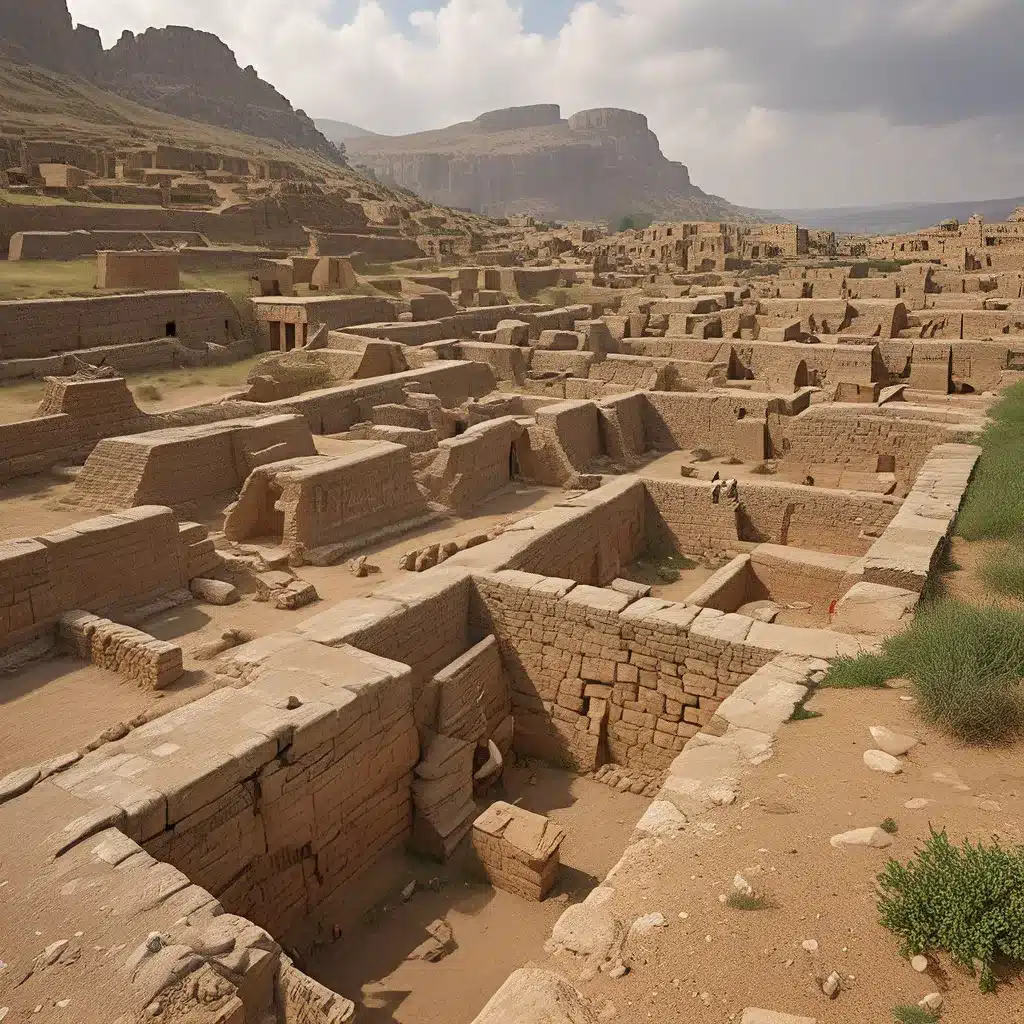
From the towering pyramids of Egypt to the enigmatic statues of Easter Island, the ancient world has long captivated the human imagination. Through the lens of archaeology, we have unlocked the secrets of bygone civilizations, piecing together a tapestry of clues that reveal the rich tapestry of human history. In this article, we’ll explore how the pursuit of archaeological discovery has transformed our understanding of the past, shedding light on the lives, cultures, and achievements of our ancestors.
The Rise of Archaeological Art
In the 19th century, a Victorian Classical Revival movement emerged, driven by a fascination with the ancient world. Artists such as Frederic Leighton, Albert Joseph Moore, and George Frederic Watts were captivated by the material culture and everyday rituals of antiquity, and they sought to bring these lost worlds to life through their paintings. Among the most prominent figures in this movement were Lawrence Alma-Tadema, Edward Poynter, and Edwin Long, who became known as the “archaeological painters” of their time.
Inspired by archaeological discoveries, museum exhibitions, and the published works of scholars like John Gardner Wilkinson, these artists meticulously incorporated a wealth of archaeological detail into their paintings, creating vivid scenes that transported viewers to the heart of ancient civilizations. From the domestic antiquities of Egypt to the architectural grandeur of Rome, their works provided a unique window into the past, sparking the imagination of audiences and shaping popular perceptions of these ancient cultures.
Alma-Tadema’s Masterful Reconstructions
Among the most renowned of these archaeological painters was the Dutch-born artist Lawrence Alma-Tadema. Trained in Antwerp and later inspired by his travels in Italy, Alma-Tadema developed a deep fascination with the material world of antiquity. His Egyptian-themed paintings, in particular, showcased his exceptional skill in blending archaeological accuracy with captivating narratives.
One of Alma-Tadema’s most celebrated works, “Egyptian Widow” (1872), exemplifies his meticulous attention to detail. The painting depicts a grieving widow kneeling beside the coffin of her deceased husband, surrounded by a wealth of archaeological elements, from the decorated columns and ornate sarcophagi to the funerary objects and domestic items that adorn the scene. Alma-Tadema’s extensive research and use of primary sources, such as the Egyptian collections at the British Museum, allowed him to create a richly detailed and atmospheric representation of ancient Egyptian daily life.
Another masterpiece, “Death of the Firstborn” (1872), explores the biblical story of the Plague of the Firstborn, with Pharaoh cradling his deceased child while a group of grieving figures surrounds him. Here, Alma-Tadema’s incorporation of archaeological artifacts, such as the wooden stool and jar-stand, heightens the sense of authenticity and intimacy within the scene, inviting the viewer to engage with the emotional weight of the moment.
Poynter’s Panoramic Visions
Alma-Tadema’s contemporary, Edward Poynter, also made significant contributions to the archaeological art movement. Like Alma-Tadema, Poynter drew inspiration from the Egyptian collections at the British Museum, using meticulous archaeological detail to bring ancient scenes to life.
One of Poynter’s most influential works, “Israel in Egypt” (1867), presents a dramatic panorama of the enslavement of the Israelites. The painting’s centerpiece is a majestic recumbent lion sculpture, based on an artifact in the British Museum, which serves as a powerful symbol of the Egyptian rulers’ oppression. The scene is further enriched by the inclusion of architectural elements, religious imagery, and a procession of soldiers, priests, and musicians, all rendered with a remarkable attention to archaeological accuracy.
In addition to his large-scale historical paintings, Poynter also created a series of Egyptian-themed illustrations for the Dalziels’ Bible Gallery, where he meticulously reconstructed ancient domestic interiors and decorative items, showcasing his deep understanding of the material culture of the time.
Long’s Narrative Explorations
While Alma-Tadema and Poynter were renowned for their archaeological expertise, Edwin Long also made significant contributions to the Victorian Classical Revival movement with his own unique approach to ancient Egyptian themes.
Long’s “Egyptian Feast” (1877) is a sprawling, highly detailed scene that depicts an ancient Egyptian custom described by Herodotus. The painting features a vast gathering of people and a stunning array of antiquities, all meticulously rendered based on objects in the British Museum’s Egyptian collection, from the dark granite statue to the inlaid stool and three-legged table.
Long’s subsequent Egyptian-themed paintings, such as “The Gods and Their Makers” (1878) and “Pharaoh’s Daughter” (1886), continued to showcase his ability to combine archaeological detail with biblical and mythological themes, creating compelling narratives that captivated the public’s imagination.
The Legacy of Archaeological Art
The Egyptian-themed paintings of Alma-Tadema, Poynter, and Long played a significant role in shaping popular perceptions of ancient civilizations. By infusing their works with a wealth of archaeological detail, these artists challenged the traditional boundaries of history painting, elevating the importance of material culture and everyday objects in our understanding of the past.
Their paintings not only captured the beauty and grandeur of ancient sites but also injected a sense of emotion and intimacy into the portrayal of these long-lost worlds. By focusing on the domestic and utilitarian aspects of ancient life, they provided a more inclusive and relatable perspective on the past, sparking a deeper appreciation for the material dimensions of history.
Although the Victorian Classical Revival movement eventually waned, the legacy of these archaeological painters continues to resonate today. Their works have inspired a renewed interest in the intersection of art, archaeology, and the study of ancient civilizations, underscoring the power of visual storytelling to deepen our understanding of the human experience across time and space.
At TheLostKingdoms.com, we are dedicated to exploring the rich tapestry of ancient history, uncovering the mysteries of the past through the lens of archaeology and the creative interpretation of our ancestors’ material culture. Join us on this journey of discovery as we continue to unravel the secrets of the forgotten eras that have shaped our world.


